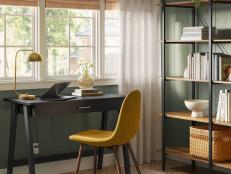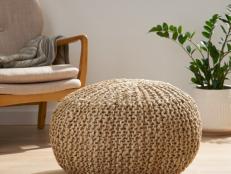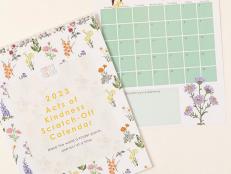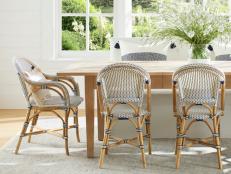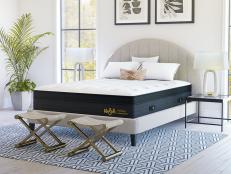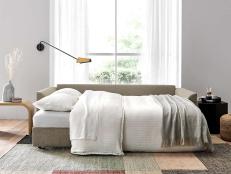What Is a Credenza? And How to Tell The Difference From a Sideboard or Buffet Table
Shop confidently for dining room furniture as we break down everything there is to know about credenzas, sideboards and buffet tables.

Shopping for new dining room storage is challenging enough without having to decipher all the different codenames for cabinets. What is a credenza? Is it the same thing as a buffet? And how do you know that you're choosing the right storage unit for your space?
Per usual, we're here to clear up the confusion. Throughout this article, we're sharing exactly what makes a credenza, sideboard and buffet table unique and pulling in some of our favorite pieces, so you can view clear examples and shop confidently.
Credenzas: Explained
Back in the day (read: the 14th century), the term "credenza" referred to a decorative piece of dining room furniture where servants would sample food and drink for elites. The idea was that if the noble family's meal had been poisoned, which was a very real threat at the time, the attempt on their lives would be discovered prior to serving. Thus, Italians called the cabinet credenza, which translates to "belief" or "confidence."
Today, credenzas are largely used for storage purposes and have become almost interchangeable with sideboards and buffet tables — though there are a few crucial differences. Credenzas are typically long and low to the floor, with no legs or very short legs. They also tend to have sliding doors or sleek ones with no obvious pulls.
Shop Our Favorite Credenzas
Sideboards: Explained
Sideboards, on the other hand, are slightly taller (about waist-high, with no legs or short legs) and more versatile. For example, a credenza would be too low to double as an entryway table, but a sideboard could easily work in the foyer or in the living room behind your sofa. Another fail-proof way to spot a sideboard in the wild? They have cupboards that extend to the floor and might come with a hutch for displaying personal items.
Shop Our Favorite Sideboards
Buffet Tables: Explained
That brings us to the buffet table. Just as the name suggests, these units are intended for buffet-style spreads — so they're nice and long like your credenzas and sideboards, but taller with more noticeable legs. They are also found and used exclusively in dining rooms.



















